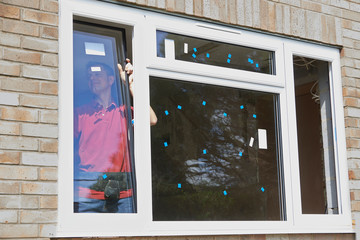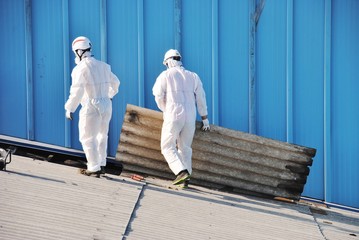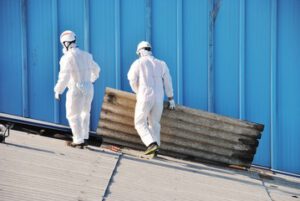Replacement Windows Potomac are a great way to improve your home’s appearance and increase its value. New windows provide superior insulation, minimizing drafts and helping you save on energy costs.
They also minimize noise from outside, providing a peaceful living environment. Understanding the different parts of a window can help you choose the right style for your home.
Whether you live in a new or older home, energy efficiency is important. Upgrading your old single-pane windows to double-pane windows that meet energy star standards will help save you money on utility bills, keep your house more comfortable, and provide a healthier living environment.
Energy efficient replacement windows are better insulated, and they reduce drafts which allows your furnace and air conditioner to work less hard. This will cut your energy costs significantly and lower the amount of carbon dioxide emitted by your home.
In addition to reducing energy consumption, the insulating properties of modern replacement windows help to block out harmful UV rays from sunlight. These rays can cause your furniture, carpet, drapes, and other fabrics to fade over time. Upgrading to windows that are rated with low UV protection will help to protect these valuable belongings and increase their lifespan.
Modern replacement windows come in a variety of colors and finishes to compliment the interior and exterior design of your home. This means that you can create a cohesive look throughout your home, while also increasing the curb appeal.
If you are looking for a more personalized look, consider choosing replacement windows that are designed with a flush flange. This style will not interfere with the trim, siding, and other features of your existing house. For a more traditional and classic look, you can choose to install insert replacement windows which are built into the existing frame. This option will allow you to preserve the existing window frames, trim, and siding while still adding a more energy-efficient window. This type of replacement window will also be more affordable than full frame replacement windows.
Increased Home Value
Depending on the window type and installation method, homeowners can realize up to an 80% return on investment when it comes time to sell their home. The new windows may also help to reduce energy bills and prevent future damage caused by leaky and drafty old windows. ENERGY STAR certified replacement windows can offer homeowners additional tax credits for energy savings.
There are two main types of windows that can be installed in an existing home, full frame replacement and pocket replacement. Full frame replacement involves removing the existing window down to the studs and installing a new window with an attached frame. This allows for inspection of the original opening and the ability to repair areas where wood has rotted or water damage has occurred. This is typically the best option for older homes where the frames are starting to deteriorate and need attention.
Pocket replacement windows are a good option when the existing window frame is in good condition and only the sash and interior trim need to be replaced. This allows for a quicker installation and reduces the amount of work needed to remove siding, brickmould or drywall around the existing window. These windows are a great choice for additions to the home or where a major renovation project is planned that will require a lot of work to the wall system.
Whether you choose a full frame or pocket replacement, both options will improve the appearance of your home and increase its value. However, the final decision should be based on the condition of the existing window frame and your budget.
Increased Comfort
A home is supposed to be a comfortable retreat, and many homeowners are amazed at how much more pleasant their homes feel after new replacement windows are installed. The removal of drafts, reduced glare and UV exposure to furniture and other household belongings are all benefits that people appreciate immediately.
New replacement windows are also more effective at preventing airborne allergens from entering the home, such as pollen and dust, which can help alleviate allergy symptoms. Additionally, by reducing noise pollution from the outside, they can help improve sleep quality and overall home comfort.
Older windows often allow a lot of unwanted sound to enter the home, such as street noises, neighorhood dogs, and heavy traffic. Newer replacement windows offer better sound insulation, making it easier to relax and decompress inside.
Newer window models are designed to let more natural light into the home, which can be helpful for improving mood, reducing reliance on artificial lighting during the day and increasing productivity. Additionally, these new windows have the ability to open and close for ventilation without requiring the use of screens or other window coverings.
The installation of replacement windows can be done in a variety of ways to suit the needs and style of the home. Depending on your preference, you can have full frame replacement windows or inserts installed. In general, inserts fit into the existing frames of the windows to be replaced and are more difficult for a do-it-yourselfer to install. Full frame replacement windows, on the other hand, are built to replace the entire window casing and can be installed quickly and easily with a professional installer. They also have more customization options for appearance, including exterior trim and interior finish.
Increased Safety
While improved energy efficiency and a refreshed look are important benefits of replacement windows, it is also possible to design windows with enhanced safety features. While these window additions may not completely deter a burglar, they can certainly make it harder for a criminal to break into your home.
In addition, some frame materials are much stronger than older models. This can help keep your home secure in the event of an earthquake or another disaster.
Modern double-hung windows are designed with security in mind. They have a balance system that allows the top and bottom sash to be opened easily for cleaning or escape in the event of a fire. This maneuver is simple enough to be taught to small children as part of a family fire drill, and it is easy enough to perform during an actual emergency.
Additionally, a new replacement window’s glass can be made of laminated safety glass that holds together when broken. This can help prevent serious injuries from shattered glass, and it also helps reduce outside noise.
Many of today’s replacement windows feature reinforced frames that are made to resist bending and warping. This is especially important if you live in an area that experiences extreme weather conditions. In addition, the new lock technology that is available on most replacement windows makes it hard for intruders to pry open your windows.
If you are considering installing new or replacement windows in your home, it is a good idea to speak with a professional company that specializes in these types of projects. A knowledgeable contractor will be able to help you choose the best options that will meet your needs and budget.
Increased Curb Appeal
A home’s exterior sets the stage for a buyer’s first impression. It’s important to maximize curb appeal for both a potential sale and a homeowner’s enjoyment. Fortunately, many elements of curb appeal are inexpensive and easy to do.
The most significant upgrade to a home’s curb appeal is a fresh coat of paint. It’s also the cheapest and most effective way to change the look of a house. A few strokes of the brush can brighten a faded exterior, add personality to a monochromatic palette, or create dramatic contrast with trim and siding colors.
Adding window shutters is another simple and cost-effective way to dress up characterless windows. They can be painted in a modern color or left in the original white for a more traditional style. Adding them can make the windows stand out in a neighborhood and help create an inviting front porch.
Other simple improvements that increase curb appeal include the addition of a mailbox and new landscape lighting to highlight pathways. Using mulch that frames the planting areas makes them pop and keeps the plants healthy longer while controlling weeds and fungus.
Choosing the right replacement windows is key to improving a home’s appearance and increasing its value. Purchasing mass-produced insert windows from a home improvement store can result in poor quality and a less attractive appearance. It’s often better to work with a local contractor and choose high-quality vinyl replacement windows with a wide range of frame colors, grid systems, and decorative glass options. They’re available in a variety of shapes and sizes to match any architecture. They’re also easier to install than custom-built windows and will have a more uniform appearance.



